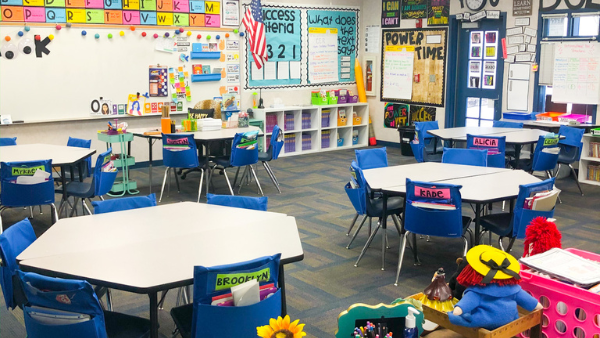Back-to-school season means new supplies, fresh bulletin boards, and a classroom full of students who may not know each other, or you, yet. And let’s be real: upper elementary students can spot cheesys icebreaker from a mile away. They’ve done the “two truths and a lie” thing more times than they can count, and they definitely don’t want to play anything that feels like it’s meant for younger kids.
But here’s the good news: there are icebreakers that feel age-appropriate, build real classroom community, and won’t take an hour of prep. (Because if you’re anything like me… you’ve got a lot on your plate.)
So here are a few of my favorite easy-to-run, upper-elementary-approved icebreakers that help you build connections without the cringe.
“This or That” Lightning Round
This one’s fast, fun, and zero prep. Just call out a series of rapid-fire “this or that” questions, and have students respond using hand motions or by standing/sitting.
For example:
-
Clap once if you prefer math, clap twice if you prefer reading.
-
Stand up for recess, stay seated for lunch.
-
Thumbs up for pizza, thumbs down for tacos.
Do 10–15 quick rounds in a row and keep it upbeat!
Why it works:
-
No writing
-
No prep
-
Every student is involved
-
You get a quick read on their personalities and preferences
-
It shakes off first-day nerves with movement and laughter
“Would You Rather”… with a Twist
Yes, “Would You Rather” is always a crowd-pleaser, but make it more engaging by letting students move around the room.
Label each corner with choices like:
-
Dogs or Cats
-
Ice cream or Cake
-
Read a book or Watch a movie
Call out each prompt, and students walk to the corner that represents their choice. Then, have them turn and talk with someone near them to explain why they chose that answer.
Why it works: It gives kids a voice, gets them up and moving, and helps them find common ground. Bonus: It’s super low prep.
“Me in a Bag” or “One Thing About Me”
Have students bring one item from home (or draw it if they forget) that tells something about who they are. This could be:
-
A favorite book
-
A small toy or collectible
-
A family photo
-
A special souvenir
Each student shares their item and explains why it matters to them. It’s a great way to honor student identities from the start and build trust.
Pro tip: Model it first! I like to bring in a favorite pen (because I always have one on me), a photo of my dog, and a mini version of my favorite iced coffee cup. It helps break the ice and makes students more comfortable opening up.
“Same and Different” Partner Interviews
Pair students up and give them a simple Venn diagram or a paper folded into three columns: “Me,” “Both,” and “Partner.”
They interview each other to find things they have in common and differences that make them unique.
Try prompts like:
-
Favorite subject in school
-
Something you’re really good at
-
A food you love (or can’t stand)
-
What you did this summer
Afterward, invite a few pairs to share one fun fact they learned about each other.
“Team Tower Challenge”
Divide the class into small groups and give them a challenge: build the tallest freestanding tower using only:
-
10 pipe cleaners
-
10 index cards
-
1 foot of tape
Set a timer for 10–15 minutes. At the end, have each group share their creation and talk about how they worked together.
What’s the magic here? It builds teamwork and gives you insight into how your students collaborate, problem-solve, and handle a little pressure.
Final Thoughts
The best icebreakers don’t just fill time. They lay the foundation for a classroom where every student feels seen, valued, and safe to be themselves.
You don’t need elaborate games or hours of prep to build community. Just some intentional, low-stress activities that give students a chance to connect.
And remember, the goal isn’t perfection. It’s connection.
Here’s to a great start to your year!
More First Week Ideas
If you’re looking for ready-to-go activities to make your first week even easier, check out my First Week of School Activities resource in my shop!
It’s packed with engaging, upper-elementary-friendly tasks that help build routines, relationships, and confidence, without the stress.
